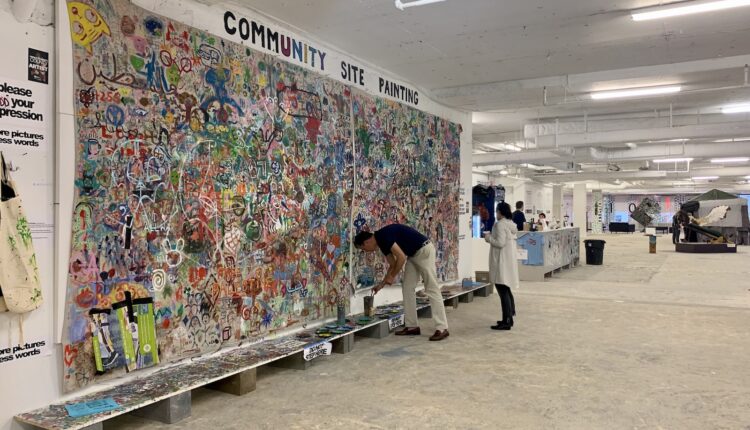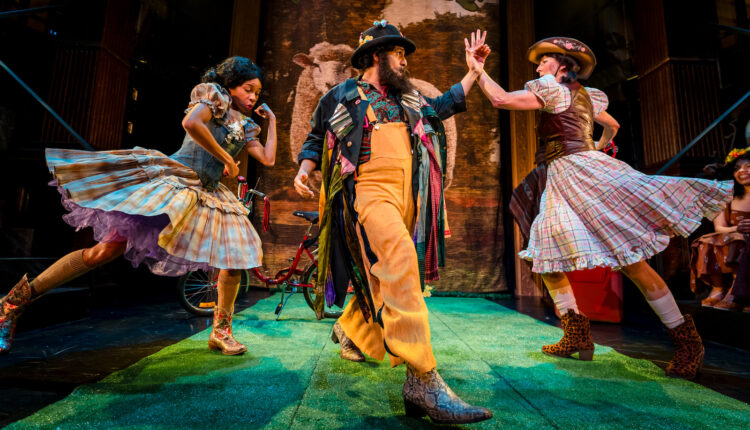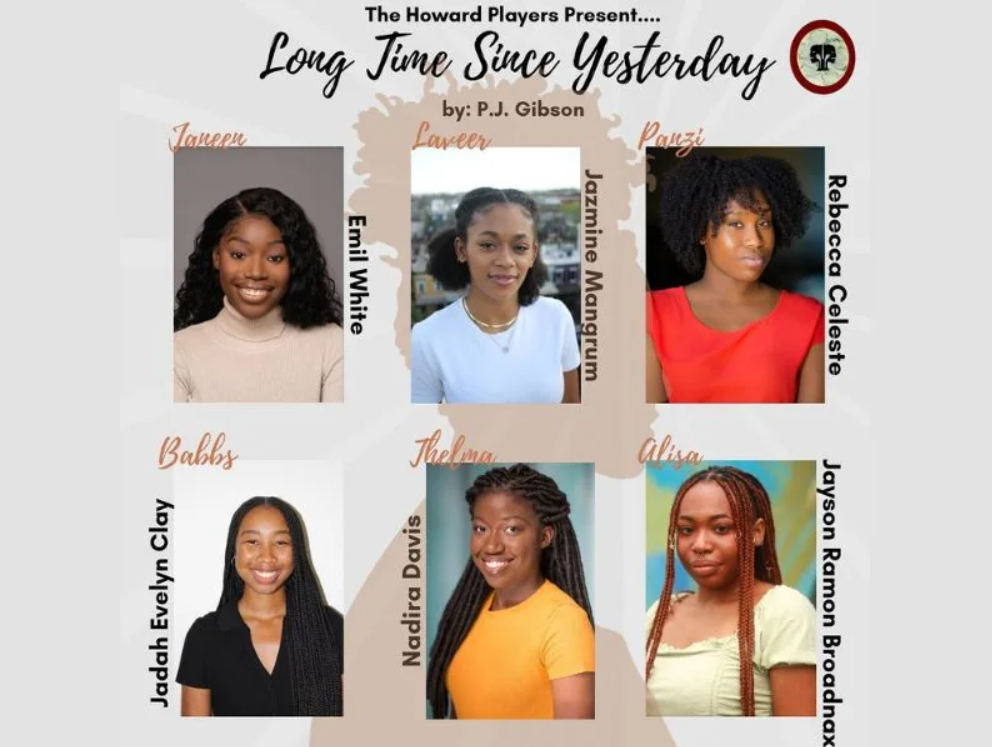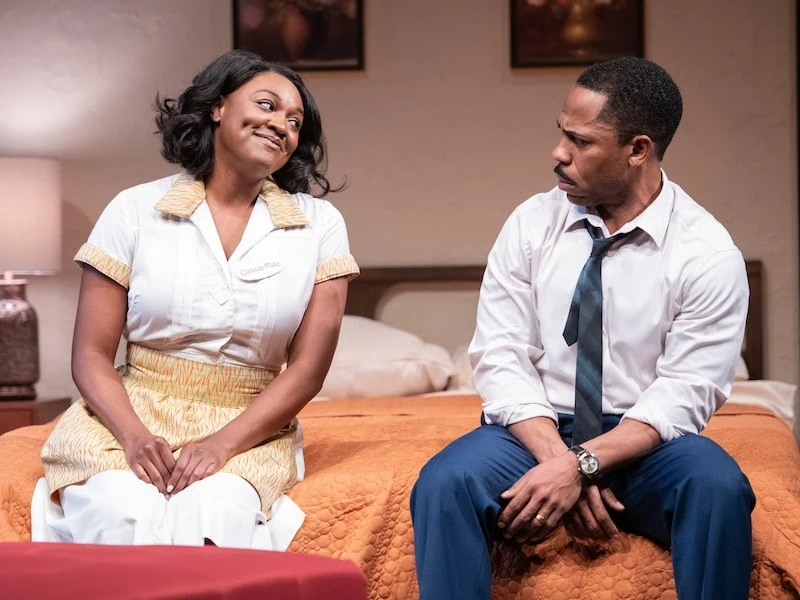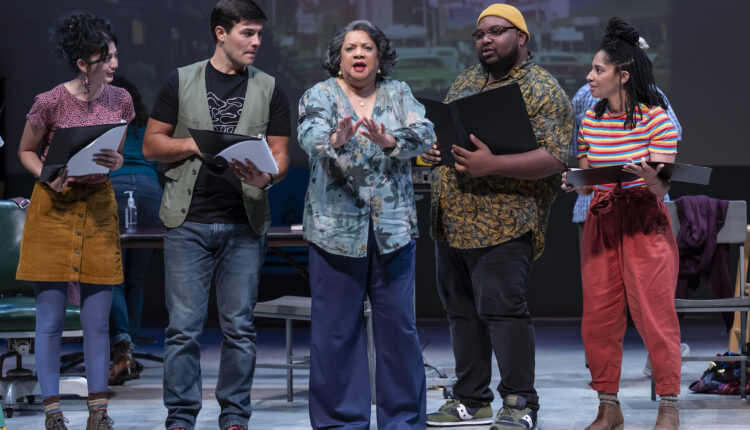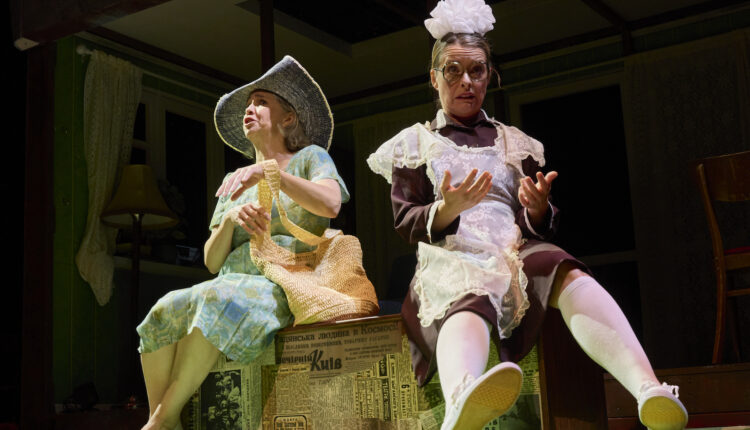By Abby Stuckrath
This article was originally published in The DC Line, here.
In its latest incarnation, Artomatic once again serves as a beacon of creativity, transforming a vacant building into an artistic hub. From sculptures fashioned from trash in the Potomac to a time-lapse video capturing the Rosslyn skyline, Artomatic demonstrates dynamic, empowering and utterly captivating art that defies traditional form. Running through April 28, Artomatic covers eight floors in a Golden Triangle office building, with the exhibition showcasing the works of over 1,000 artists and performers, ranging from live musical acts to tarot card readings — ensuring there is something to enchant every visitor.
Twenty-five years ago, Artomatic emerged as a liberated space for artists in an abandoned office building at 14th Street and Florida Avenue NW. It was a free-flowing exhibition devoid of a formal curator, where artists wielded the space for their creative voices. The mission of the entirely volunteer-run show remains to “create community, build an audience, and expand economic development by transforming available space into a playground for artistic expression.” After a seven-year hiatus, this groundbreaking art extravaganza has returned to DC, this time hijacking an unoccupied office building on M Street NW.
In this transformative ecosystem of artistic expression, the bounds between creator and audience blur, fostering a sense of community and connection that transcends most traditional gallery experiences. The events at Artomatic range from paint-off competitions to self-exploration workshops, making it not a venue for passive observation but instead a place where individuals become active participants in the Artomatic community.
Stepping off the elevator onto the eighth floor — a logical place to start — you’re greeted by a stripped-down building, its structure bare against rugged cement floors. On the northeast side, visitors can unleash their creativity on a community canvas wall with paint and brushes supplied nearby. With the end of Artomatic’s seven-week run fast approaching, the once-blank canvas brims with a kaleidoscope of random squiggles and smiley faces, serving as a testament to the thousands of Artomatic visitors who’ve left their mark.
Turn the corner, and you’ll find art covering every surface. Karen La Du and Jeffrey Blender’s “Adventures in COOKIELand” installation offers an immersive journey saturated with vivid pinks and blues. Their whimsical and abstract sketches evoke a sense of nostalgia reminiscent of the classic style of Keith Haring.
After walking down the stairs or riding the elevator to the seventh floor, audiences are met with a labyrinth of office spaces, each room dedicated to the work of an individual artist. Natalia Febo’s vibrant neon room, adorned with watercolor depictions of vegetables, fruits and empanadas, stands out as a refreshing oasis amid the darker, gloomier artwork scattered throughout the floor.
On the seventh floor, you’ll also find a room with a continuous stream of films, predominantly in short form. Unfortunately, the quality of these films does not meet the standards set by other art installations. One example is Heritage Film Festival’s short “Birds of the Air,” which feels stiff and lacks the emotional intimacy necessary to effectively portray the story of a transgender woman’s first day presenting as herself.
A standout installation is on the third floor, where Syahidah Osman is showcasing more than a hundred small photo collages adorned with maps and portraits of missing people from East Turkestan who are detained in Chinese Uyghur internment camps. Many victims have had their passports confiscated; they’ve also been assigned to forced labor. Moreover, a large number have vanished altogether. Osman’s artwork is just one of the many pieces across Artomatic’s eight floors that leave a lasting impression.
With each visit to Artomatic, audiences are enveloped in unique art installations that celebrate freedom of expression. Unlike traditional art showrooms, Artomatic is able to provide a platform that empowers artists who might otherwise need more time or financial means to showcase their work.
By repurposing a demolition site into a place of creativity and freedom, Artomatic uplifts the voices of artists in ways that more conventional museums and galleries cannot achieve. By fostering this collaborative environment, Artomatic encourages audiences and artists to experiment, innovate and push boundaries without the pressure or expectations of a mainstream art institution. Artomatic democratizes access to the arts while making it accessible and relevant to a mass audience.
This is more than just an exhibition space; it’s a living testament to the boundless nature of human creativity. It’s a place where inspiration is limitless, and the possibilities — for visitors and the featured artists alike — are as endless as the imagination itself.

